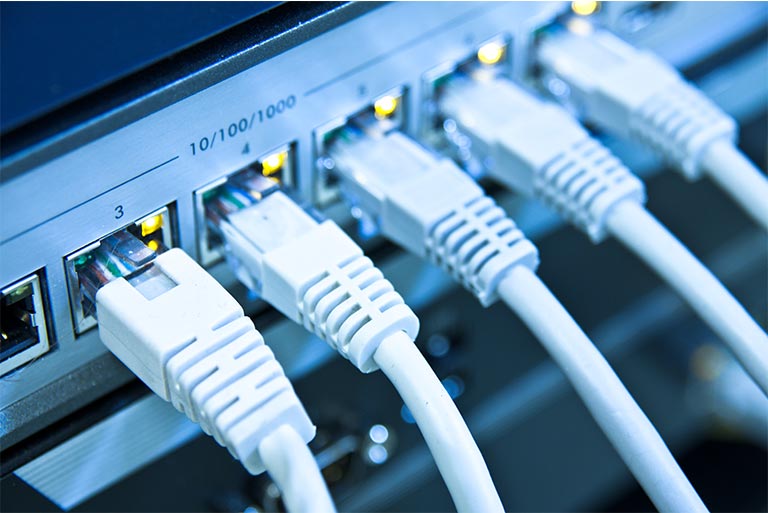In today’s digital age, businesses rely heavily on the network infrastructure to communicate, collaborate, and access resources. As businesses grow, so does their need for a scalable network that can handle increasing demands without compromising performance or security. However, choosing the right networking equipment can be a daunting task, with various options available in the market. This is why it’s essential for growing businesses to understand their networking requirements and select the right equipment that can keep up with their growth trajectory.
With a Cisco switch, businesses can easily expand their web and add new devices as they grow, without compromising on performance or security. These switches are designed to handle high traffic volumes, making them ideal for organizations with large numbers of users or high-bandwidth applications.
In this article, we will explore the different factors to consider when choosing scalable networking solutions for growing businesses.

Source: medium.com
Contents
Determine Your Business Needs
Determining your business needs is a crucial first step in selecting the right networking tools for your growing enterprise. It’s essential to consider the number of users, devices, and locations that need to be supported, as well as the types of applications and data that will be transmitted across the grid. Additionally, it’s important to consider future growth plans and potential changes in the business’s needs. By understanding your company’s needs, you can choose equipment that provides the necessary scalability, security, and manageability to support your enterprise’s current and future requirements.
Consider the Type of Networking Equipment
There are different types of networking equipment available in the market, such as routers, switches, and access points. Routers are used to connect multiple grids and manage traffic between them. Switches are used to connect devices within the web, and access points are used to connect wireless devices to a network. Depending on your business needs, you may require one or more of these types of this kit.

Source: alldata.net.au
• Bandwidth requirements
When selecting networking equipment for a growing business, one of the most critical factors to consider is bandwidth requirements. Bandwidth refers to the amount of data that can be transmitted over a network connection in a given amount of time. As businesses grow, their bandwidth requirements increase due to the need for more devices, applications, and data transfers. Insufficient bandwidth can lead to network congestion, slower data transfer speeds, and decreased productivity. Therefore, it’s important to select networking equipment that can handle the current and future bandwidth requirements of the business. This includes choosing routers, switches, and access points with high throughput rates, sufficient memory, and processing power. Additionally, businesses should consider implementing Quality of Service (QoS) protocols to prioritize critical data transfers and ensure a consistent level of service.
• Security protocol
Another crucial factor to consider when choosing networking equipment for growing businesses is security protocols. With the rise of cyber threats, businesses need to ensure that their network infrastructure is secure and protected. This includes selecting equipment that supports advanced security features such as firewalls, intrusion detection and prevention systems, and virtual private networks (VPNs). Additionally, businesses should consider implementing network segmentation and access control measures to limit access to sensitive data and resources. It’s also important to keep the networking equipment up to date with the latest security patches and firmware updates.

Source: entrepreneur.com
Evaluate Scalability
Scalability is a critical factor to consider when selecting networking equipment for a growing enterprise. As the firm expands, the networking infrastructure must be able to keep up with the increasing demands. The chosen gear should support future expansion, whether that means adding more devices, users, or locations. It should be scalable and flexible enough to accommodate changing business needs without compromising performance or security.
Additionally, it’s essential to consider the capacity and throughput of the kit, as well as its ability to handle high traffic volumes and bandwidth-intensive applications. It’s also important to consider the ease of adding new devices or locations to the network, as well as the ability to manage and monitor the grid as it grows. By evaluating scalability when selecting networking equipment, companies can ensure that their web infrastructure can support their current and future requirements, without the need for significant upgrades or overhauls.
Consider Security
When selecting networking equipment for a growing business, it’s essential to consider security. Cybersecurity threats are increasing, and industries of all sizes are at risk of being targeted. The chosen tools should come with built-in security features, such as firewalls, intrusion prevention systems, and VPN capabilities. It should also support the latest security protocols, and be easy to manage and configure. Additionally, it’s crucial to implement security policies and procedures, such as user authentication and access controls, to ensure the security of the grid. By prioritizing security when selecting networking kits, companies can protect against potential attacks, data breaches, and other security risks.

Source: pcmag.com
Evaluate Manageability
Managing a complex web can be a challenging task, especially for growing businesses with limited resources. Look for networking supplies that are easy to manage and configure. Consider equipment with centralized management capabilities, such as a web-based interface or a mobile app.
Consider the Total Cost of Ownership
The cost of this equipment is an essential consideration for any company, but it’s not just the upfront cost that matters. Consider the total cost of ownership, including maintenance, upgrades, and support. Look for gear that is easy to maintain and upgrade and comes with reliable support.

Source: fool.com
Conclusion
In conclusion, networking infrastructure plays a crucial role in the success of growing businesses, and having the right equipment can make a significant difference in performance and security. By understanding their networking requirements, businesses can choose scalable networking solutions that can adapt to their growing needs. It’s important to consider factors such as bandwidth requirements, security protocols, and budget when selecting networking equipment. With the right equipment in place, growing businesses can ensure that their network infrastructure supports their growth trajectory, allowing them to remain competitive and efficient in today’s digital landscape.
